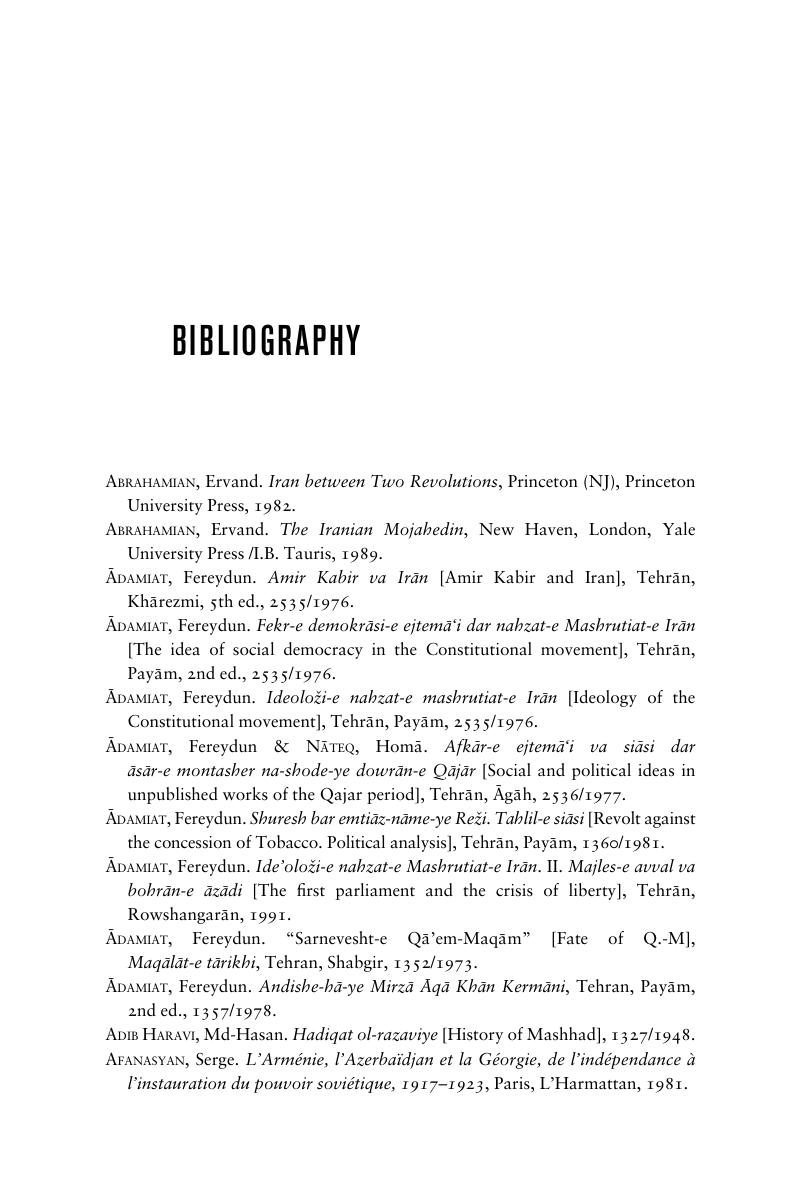Book contents
- Iran
- Iran
- Copyright page
- Note on the Translation
- Contents
- Maps
- Preface
- 1 Iran under the Qajars
- 2 Three Shahs, Three Wars, Three Reformers (1797–1896)
- 3 From Revolts to the Revolution (1880–1906)
- 4 The Constitutional Revolution: From Illusion to Reality (1905–08)
- 5 The Nationalists’ Bitter Victory (1908–12)
- 6 Iran in the Great War
- 7 The End of the Qajars
- 8 Rezā Khān to Rezā Shāh: Defender of the Nation
- 9 From Persia to Iran: Foreign Relations
- 10 The Democratic Awakening (1941–53)
- 11 The Last Reign of an Immortal Kingdom, Mohammad-Rezā Shāh
- 12 An Islamic Republic in Iran
- Conclusion: Lies and Truth
- Chronology
- Bibliography
- Index
- References
Bibliography
Published online by Cambridge University Press: 11 June 2019
- Iran
- Iran
- Copyright page
- Note on the Translation
- Contents
- Maps
- Preface
- 1 Iran under the Qajars
- 2 Three Shahs, Three Wars, Three Reformers (1797–1896)
- 3 From Revolts to the Revolution (1880–1906)
- 4 The Constitutional Revolution: From Illusion to Reality (1905–08)
- 5 The Nationalists’ Bitter Victory (1908–12)
- 6 Iran in the Great War
- 7 The End of the Qajars
- 8 Rezā Khān to Rezā Shāh: Defender of the Nation
- 9 From Persia to Iran: Foreign Relations
- 10 The Democratic Awakening (1941–53)
- 11 The Last Reign of an Immortal Kingdom, Mohammad-Rezā Shāh
- 12 An Islamic Republic in Iran
- Conclusion: Lies and Truth
- Chronology
- Bibliography
- Index
- References
Summary

Information
- Type
- Chapter
- Information
- IranA Social and Political History since the Qajars, pp. 326 - 342Publisher: Cambridge University PressPrint publication year: 2019
